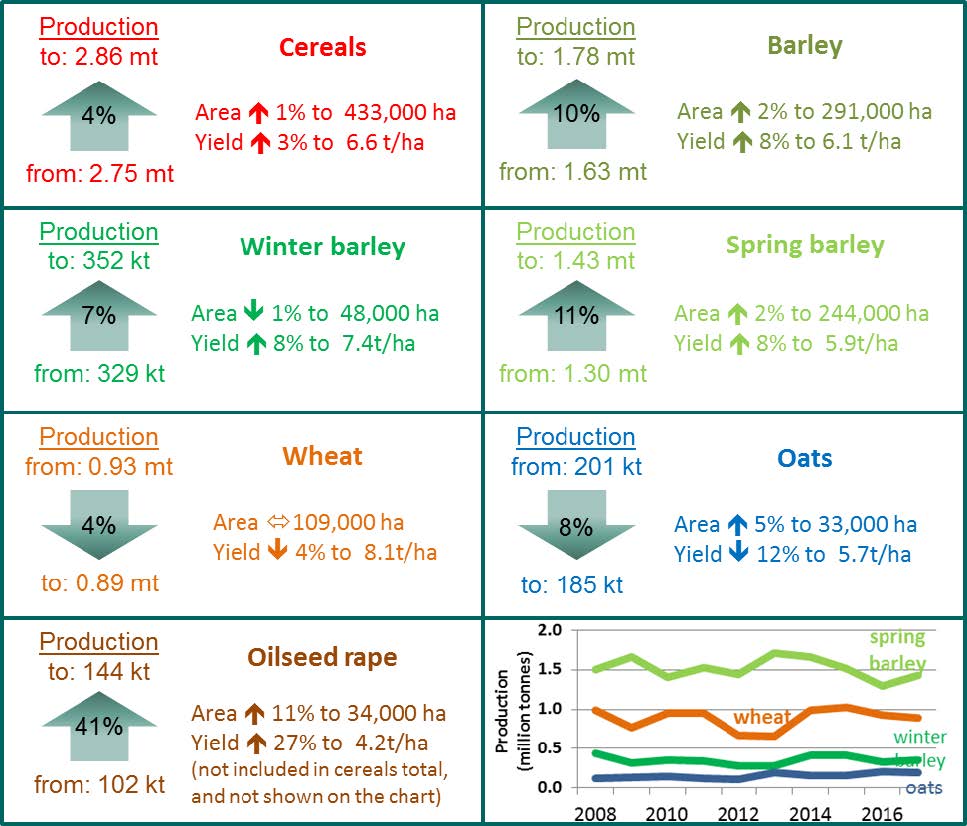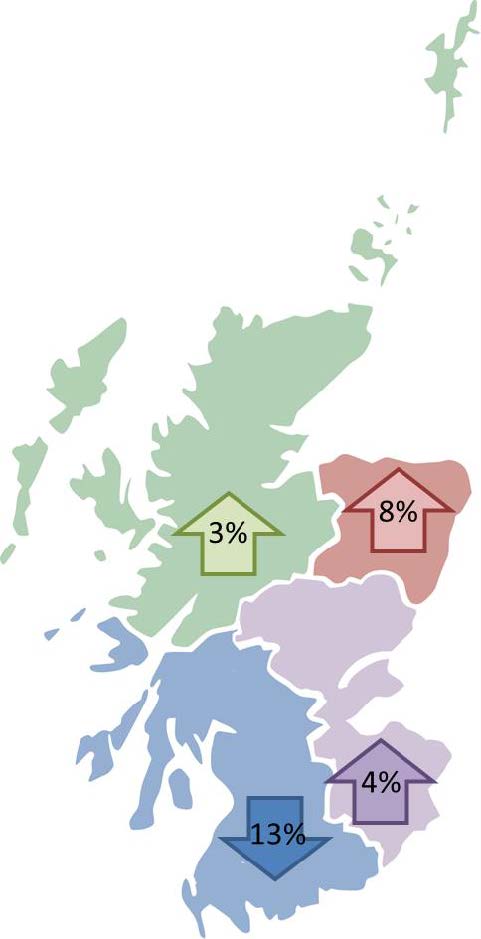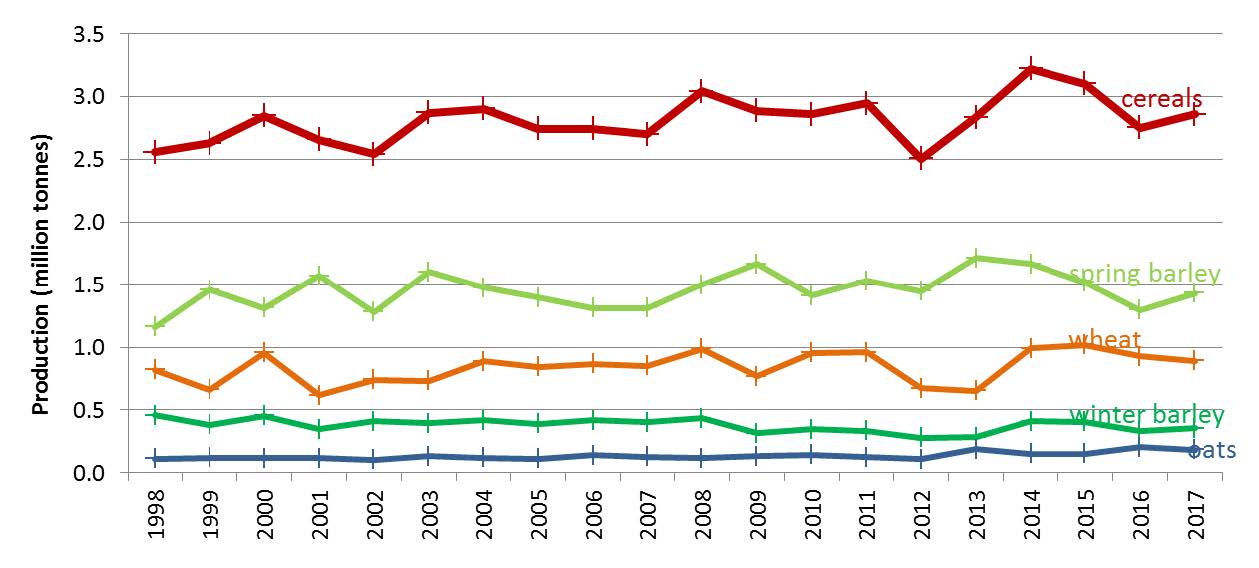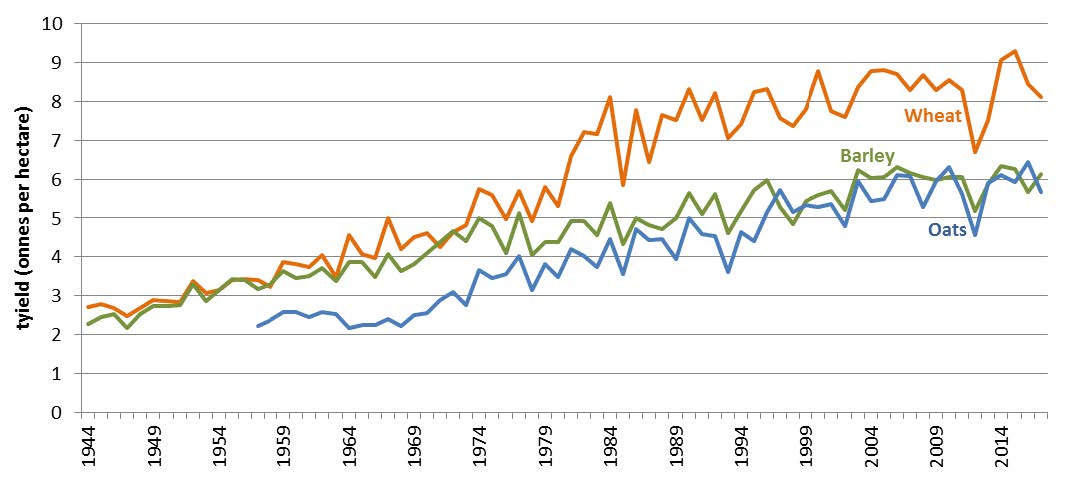Cereal and oilseed rape harvest: final estimates - 2017
Area, yield and production figures for barley, wheat, oats and oilseed, from the 2017 harvest in Scotland.
This document is part of a collection
1. Main Findings

Area, yield and production definitions
Cereal and oilseed rape crop areas represent the amount of area that has been used to grow a particular crop, which is intended for combine-harvesting and the production of grain or oilseeds. Area estimates are derived from the June Agricultural Census. "Whole crop" cereals are harvested without extracting the grain, and are used as a source of animal feed; in such cases grain production is counted as zero.
Average yields are expressed in tonnes per hectare and represent the amount of cereal grain or oilseed that is extracted from one hectare of combine-harvested area. As the moisture content of cereals and oilseeds can vary from year-to-year and farm-to-farm, depending on the level of rainfall, average yields are adjusted to a standard moisture content of 14.5 per cent for cereals and nine per cent for oilseeds. This adjustment ensures there is consistency in estimates of the amount of dry matter which can be extracted from cereal grain and oilseeds.
Production estimates are derived by multiplying crop areas (in hectares) and average yields (in tonnes per hectare). They represent the total tonnage of cereal grain and oilseed that is combine-harvested from the planted area. This tonnage does not include the weight of straw and other plant material which is produced as a by-product and used for other purposes.
When discussing production and area we are referring to estimated totals. When discussing yield we are referring to estimated averages.
Cereal production is estimated to have increased by 107,000 tonnes between 2016 and 2017, to 2.86 million tonnes. The overall four per cent increase in production this year is due to a one per cent increase in areas, and a three per cent increase in yield.
Overall production was up in all regions other than the South West, where it fell 13 per cent, from 220,000 tonnes to 192,000 tonnes.
The South East, which accounts for over half of cereal production in Scotland, saw a four per cent increase in production, with the North East, which acounts for 30 per cent, increasing eight per cent.
Production of winter and spring barley, and oilseed, is up on 2016, while that for wheat and oats declined.
Total cereal production in 2017 was one per cent lower than the average for the decade. The recent 10-year average yield is seven per cent above the previous decade's. Long term increases are likely to be due to improved efficiency in practices, development and use of high yielding varieties.
Changes in cereal production between 2016 and 2017

These estimates indicate that, compared with final estimates from the
2016 harvest:
- Spring barley production increased by 11 per cent to 1.4 million tonnes, due to an eight per cent increase in yield and a two per cent increase in the planted area.
- Winter barley production increased by seven per cent to 352,000 tonnes, due to an eight per cent increase in average yield and a one per cent reduction in area.
- Wheat production fell by four per cent to 889,000 tonnes, due to a four per cent fall in yield. Planted area remained unchanged.
- Oat production fell eight per cent on last year's record harvest, to 185,000 tonnes, due to a 12 per cent drop in yield on a five per cent increase in area.
- Oilseed rape production increased by 41 per cent to 144,000 tonnes, due to an 11 per cent increase in area and a 27 per cent increase in yield.
Chart 1: Cereal Production Trends, 1998 to 2017

Harvest Conditions
There was a mixed experience in this year's harvest. The wet weather experienced throughout the summer meant that growing condition were reasonably favourable, as long as it was possible to find a window of a few good days for the crop to dry out and then to get the combine into the field. Those that managed this, particularly in the earlier part of the harvest, managed some excellent yields. However, as the harvest drew on, these opportunities became increasingly difficult to find, which meant others lost substantial amounts of their crop.
Chart 2: Long term trend in yields, 1944-2017

Contact
There is a problem
Thanks for your feedback